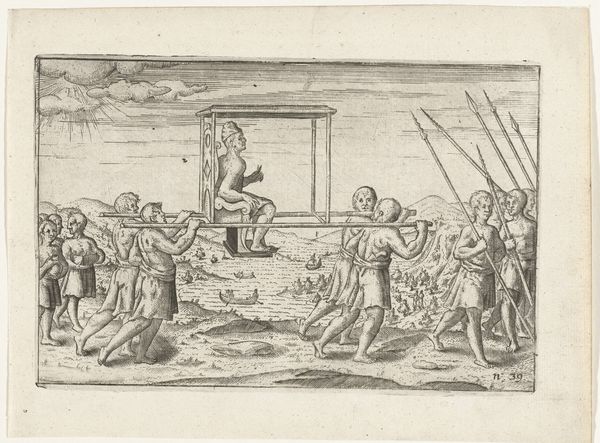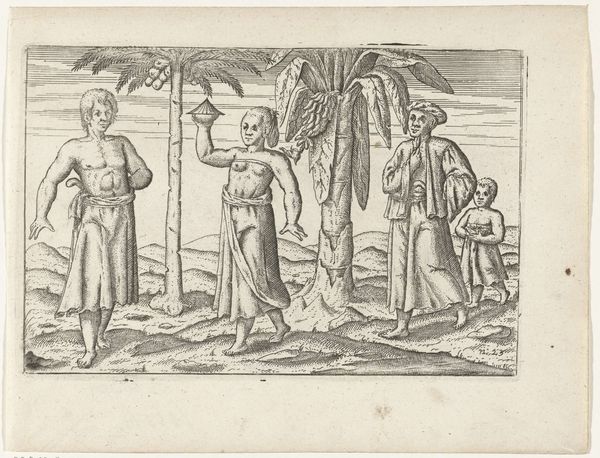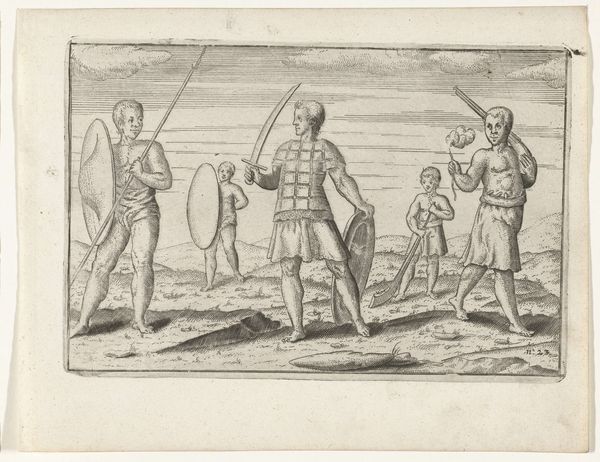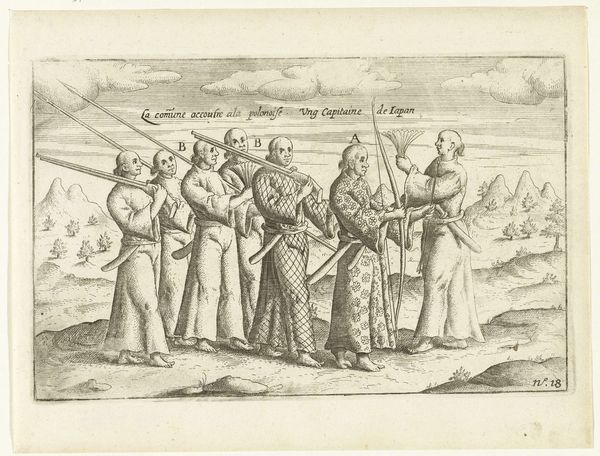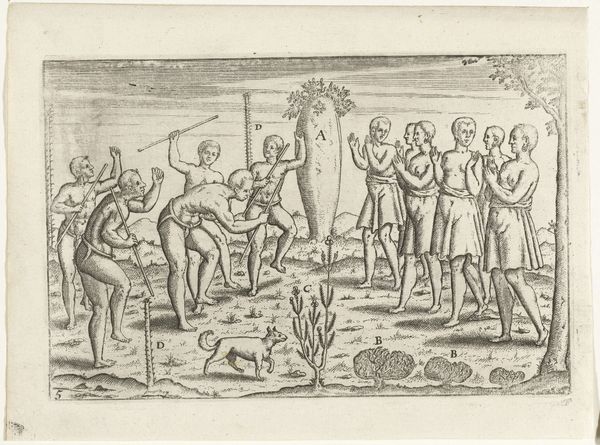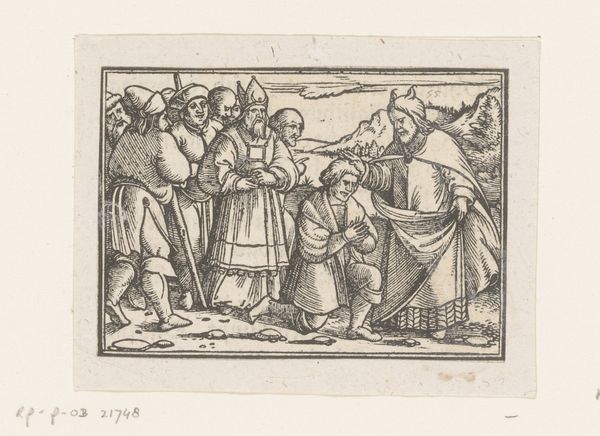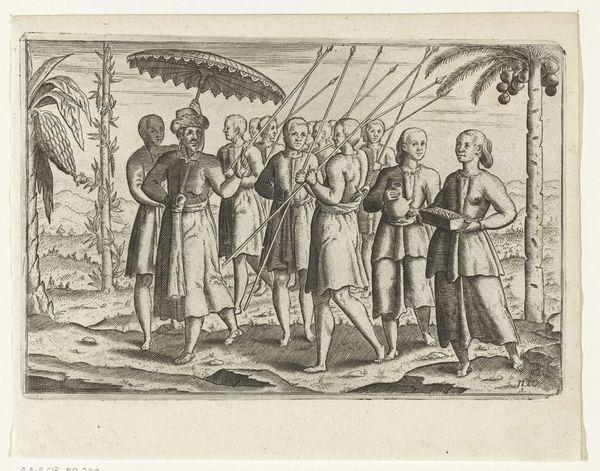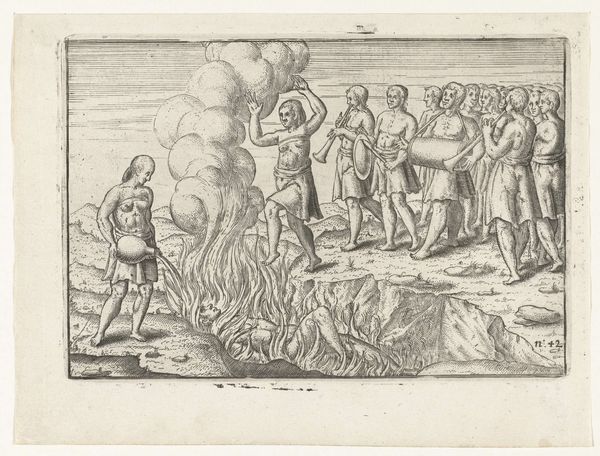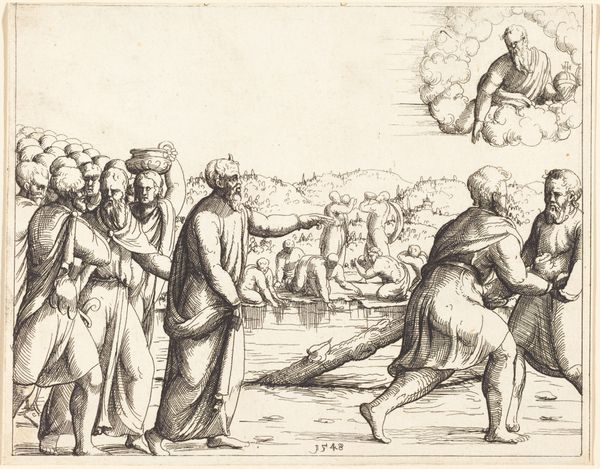
drawing, print, engraving
#
portrait
#
drawing
#
toned paper
#
light pencil work
#
mechanical pen drawing
# print
#
pen sketch
#
pencil sketch
#
asian-art
#
figuration
#
11_renaissance
#
personal sketchbook
#
ink drawing experimentation
#
pen-ink sketch
#
line
#
sketchbook drawing
#
genre-painting
#
sketchbook art
#
engraving
Dimensions: height 145 mm, width 220 mm
Copyright: Rijks Museum: Open Domain
Curator: Here we have an engraving entitled "Javaanse kapitein (Poenggawa) met gevolg, te Bantam, 1596," likely created between 1597 and 1646 by an anonymous artist. It's currently housed in the Rijksmuseum. My initial impression is that it's rather rigid. Editor: It certainly appears so. I see the rigid depiction you point out, but it's difficult not to interpret that as a visual symptom of European colonial observation, almost like an ethnographic study. Note the carefully rendered details, like the headdress or ceremonial objects, positioned against the figures' stances and relative positioning in this space—who has access to it, and what are they permitted to do. It communicates clear power dynamics. Curator: Indeed. Formally, I notice the artist utilizes a tight, controlled line, typical of engraving, to delineate each figure, almost clinically, against a relatively empty landscape. The foreground/background division creates a shallow depth of field. Note, too, how their dress codes visually reinforce differences between the standing and squatting figures. Editor: Yes, and those stark delineations contribute to the exoticization of the subjects. They become objects of study, frozen in time by the European gaze. I would read that formal precision less as "clinical" and more as appropriative, an act of colonial collecting rendered via the very lines the artist used. Consider, even the cultural context and socio-political implications inherent in that specific historical moment. What could an indigenous perspective have given to this picture? Curator: A shift in perspective, surely, that reveals inherent subjective intentions. And this print, rendered through a detailed focus on line and form, solidifies their specific colonial viewpoint and power. The artist organizes each group using spatial tension. Editor: Right, so that inherent power structure becomes part of the piece’s composition, influencing not only who and what is portrayed but how it’s understood across centuries. That act of freezing power perpetuates. Curator: On closer view, one realizes just how intentional those choices had to be. Editor: Exactly! The choice to flatten depth of field and draw stark divisions allows viewers today to see not only what it attempts to show, but what’s left unseen by that dominating eye. Curator: Thank you for expanding the piece with your insights. Editor: Thank you, too, for starting us off.
Comments
No comments
Be the first to comment and join the conversation on the ultimate creative platform.
